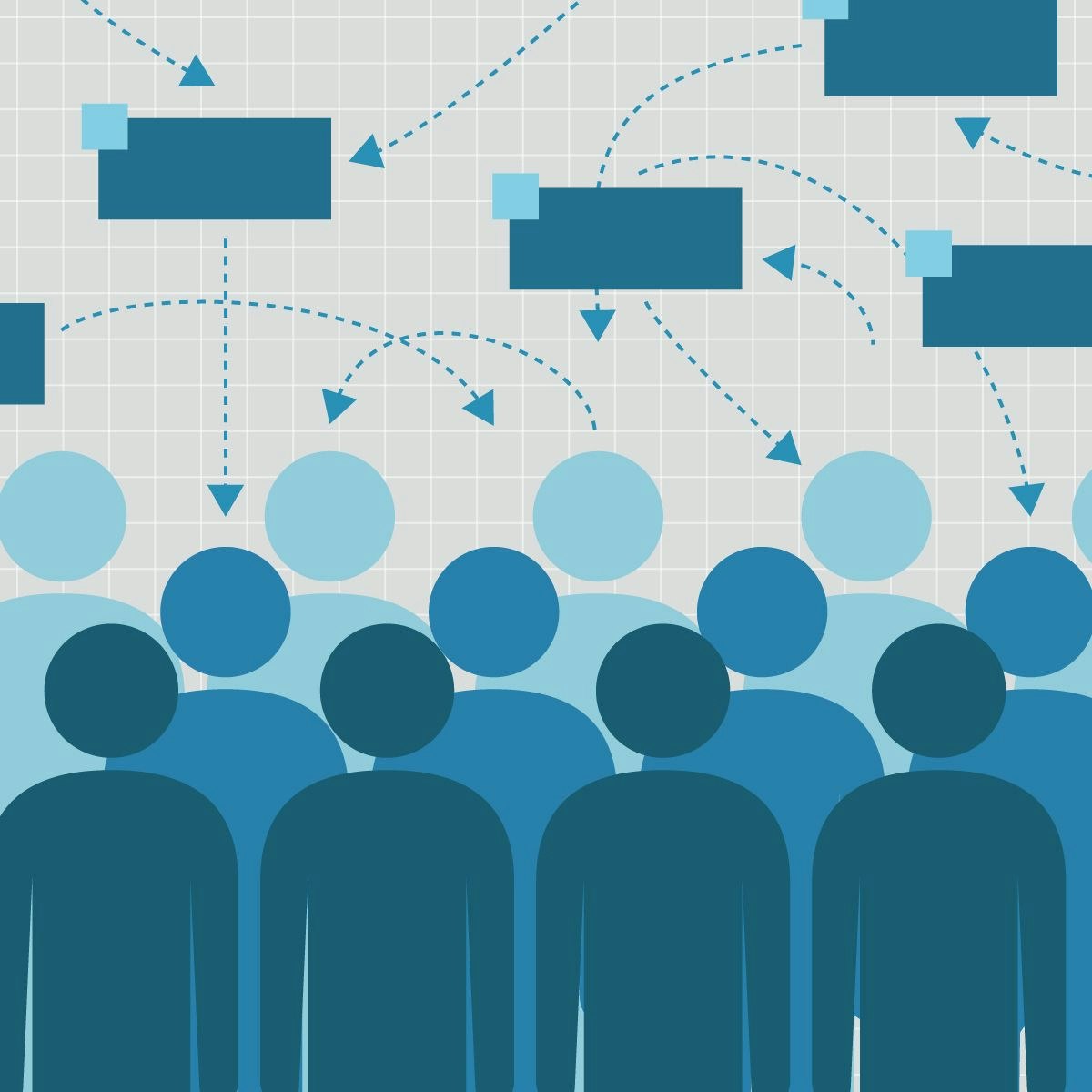Predictive Modeling
Introduction to Predictive Modeling: Shaping the Future with Data
Predictive modeling is a powerful statistical technique that leverages historical data to forecast future outcomes. At its core, it involves creating a mathematical model that takes known input variables and generates a prediction for an unknown output variable. This process often utilizes machine learning algorithms to refine and enhance the model's accuracy over time. Imagine being able to anticipate customer behavior, detect fraudulent transactions before they cause significant damage, or even predict the likelihood of a patient developing a particular disease – these are just a few examples of the transformative potential of predictive modeling. It's a field that blends statistical rigor with the art of data interpretation, offering exciting opportunities to uncover hidden patterns and make informed, data-driven decisions across a vast array of industries.
Working in predictive modeling can be intellectually stimulating. You'll constantly be challenged to think critically, solve complex problems, and translate intricate data into actionable insights. The ability to see the direct impact of your work, whether it's optimizing a marketing campaign or improving patient outcomes, can be incredibly rewarding. Furthermore, as data continues to grow in volume and importance, the skills you develop in predictive modeling will become increasingly valuable and applicable across diverse sectors, opening doors to a wide range of career possibilities.
What is Predictive Modeling?
Predictive modeling, at its heart, is about using what we know from the past to make educated guesses about the future. It's a cornerstone of predictive analytics, which is the broader practice of using data, statistical algorithms, and machine learning techniques to make these forecasts. Think of it like a detective analyzing clues from a past case (historical data) to understand the perpetrator's methods (patterns and relationships) and then using that knowledge to predict where they might strike next (future outcomes). This isn't about gazing into a crystal ball; rather, it's a systematic and data-driven approach to reducing uncertainty.
The exciting part is that predictive modeling isn't confined to one specific area. Its applications are widespread, ranging from forecasting sales and managing inventory in retail to assessing risk in finance and even predicting patient outcomes in healthcare. The models themselves are not static; they are regularly validated and updated with new data to ensure their continued accuracy and relevance in a constantly changing world. This dynamic nature means that practitioners are always learning and adapting, making it a continuously evolving and engaging field.
Definition and Core Purpose
Predictive modeling is a statistical technique that uses historical and current data to forecast future events or outcomes. The fundamental goal is to build a mathematical model that can take a set of input variables (predictors) and generate a predicted output variable. This output could be a numerical value, like the expected sales of a product, or a categorical label, such as whether a customer is likely to churn or not. Essentially, it's about finding patterns and relationships in existing data and then using those insights to make informed predictions about new, unseen data.
The core purpose of predictive modeling is to support decision-making. By providing a data-driven glimpse into potential future scenarios, these models empower individuals and organizations to make more strategic choices, mitigate risks, and capitalize on opportunities. For example, a financial institution might use predictive models to assess the creditworthiness of loan applicants, or a marketing team might use them to identify customers most likely to respond to a new campaign. The ultimate aim is to move beyond reactive responses and enable proactive planning based on quantitative evidence.
It's important to distinguish predictive modeling from simply describing what has happened. While understanding past trends is a crucial first step, predictive modeling goes further by attempting to answer the question, "What is likely to happen next?" This forward-looking perspective is what makes it such a valuable tool in today's data-rich world.
Historical Evolution and Key Milestones
The roots of predictive modeling can be traced back to fundamental statistical concepts developed over centuries. Early forms of regression analysis, for instance, laid the groundwork for understanding relationships between variables. However, the advent of computers dramatically accelerated the field's development. Increased computational power allowed for the analysis of larger datasets and the implementation of more complex algorithms.
Key milestones include the formalization of statistical decision theory and the rise of machine learning as a distinct field. The development of algorithms like decision trees, neural networks, and support vector machines in the latter half of the 20th century provided powerful new tools for predictive tasks. The explosion of "big data" in recent decades, fueled by the internet and digital technologies, has further propelled predictive modeling to the forefront, making it an indispensable tool across countless domains. The ongoing evolution of algorithms and the increasing availability of data continue to push the boundaries of what predictive modeling can achieve.
Today, the field is characterized by rapid innovation, with ongoing research into more sophisticated algorithms, improved model interpretability, and the integration of predictive capabilities into a wider range of applications. The journey from basic statistical forecasting to the complex, AI-driven models of today reflects a continuous quest to harness the power of data to understand and anticipate the future.
Relationship to Statistics, Machine Learning, and Data Science
Predictive modeling sits at the intersection of several related disciplines, primarily statistics, machine learning, and data science. Understanding these relationships helps to clarify the unique contribution of predictive modeling while acknowledging its interdisciplinary nature.
Statistics provides the theoretical foundation for predictive modeling. Concepts like probability, hypothesis testing, and regression analysis are fundamental to building and evaluating predictive models. Statistical thinking helps in understanding data distributions, quantifying uncertainty, and ensuring the rigor of the modeling process.
Machine learning offers a vast toolkit of algorithms and techniques for building predictive models, particularly when dealing with complex, high-dimensional data. Machine learning algorithms can automatically learn patterns from data without being explicitly programmed for each specific task. This is especially powerful for uncovering non-linear relationships and interactions that might be difficult to identify with traditional statistical methods alone. Many predictive modeling techniques, such as decision trees, neural networks, and ensemble methods, are direct products of machine learning research.
Data science is a broader, multidisciplinary field that encompasses predictive modeling along with other aspects like data collection, cleaning, processing, exploratory data analysis, visualization, and communication of insights. Predictive modeling is a core component of the data scientist's toolkit, used to generate actionable predictions from data. Data scientists often employ predictive models to solve specific business problems or to answer research questions.
In essence, statistics provides the mathematical underpinnings, machine learning provides the algorithmic power, and data science provides the overall framework and problem-solving context in which predictive modeling operates. A strong understanding of all three areas is beneficial for anyone looking to excel in the field of predictive modeling.
If these interconnected fields pique your interest, you might find the following topics worth exploring:
Key Concepts and Techniques in Predictive Modeling
Diving deeper into predictive modeling reveals a rich landscape of concepts and techniques. Understanding these fundamentals is crucial for anyone aspiring to build effective and reliable predictive models. This section will explore the core distinctions between supervised and unsupervised learning, introduce some of the most common algorithms employed, and discuss the critical processes of feature engineering and model validation.
These elements form the building blocks of any predictive modeling endeavor. Whether you're forecasting stock prices or predicting customer behavior, a solid grasp of these concepts will enable you to select the right tools for the job and interpret your results with confidence. As you become more familiar with these techniques, you'll start to see how they can be creatively combined and adapted to tackle a wide array of predictive challenges.
Supervised vs. Unsupervised Learning Approaches
In the realm of predictive modeling, learning approaches are broadly categorized into supervised and unsupervised learning. The primary distinction lies in the type of data used for training the model.
Supervised learning, also known as predictive or directed data mining, is used when you have a specific target outcome you want to predict. This approach requires labeled training data, meaning that for each historical data point, the correct output or outcome is already known. The model learns by identifying the relationships between the input features and the known output labels in this training data. Once trained, the model can then be used to predict the outcomes for new, unseen data where the output is unknown. Common tasks for supervised learning include classification (predicting a category, like "spam" or "not spam") and regression (predicting a continuous value, like a house price).
Unsupervised learning, on the other hand, deals with unlabeled data. In this scenario, there is no predefined output variable to predict. Instead, the goal is to explore the data to find hidden patterns, structures, or relationships within it. Unsupervised learning algorithms try to make sense of the data by grouping similar data points together (clustering), reducing the number of variables (dimensionality reduction), or identifying unusual data points (anomaly detection). While not directly focused on prediction in the same way as supervised learning, unsupervised techniques can be valuable for data exploration and can also be used as a preliminary step to prepare data for supervised learning.
Understanding whether your problem requires a supervised or unsupervised approach is a fundamental first step in the predictive modeling process. This choice will dictate the types of algorithms you can use and how you prepare your data.
These courses can help build a foundation in understanding the different learning approaches and how to apply them:
Common Algorithms
A variety of algorithms are used in predictive modeling, each with its own strengths and best-use cases. Some of the most common include regression algorithms, decision trees, and neural networks.
Regression algorithms are used when the target variable is a continuous numerical value. Linear regression is one of the simplest forms, aiming to find a linear relationship between input features and the output. Logistic regression, despite its name, is actually a classification algorithm used when the output is binary (e.g., yes/no, true/false). There are many other types of regression, including polynomial regression, which can model non-linear relationships.
Decision trees are versatile algorithms used for both classification and regression tasks. They work by creating a tree-like structure where each internal node represents a "test" on an attribute (e.g., is age greater than 30?), each branch represents the outcome of the test, and each leaf node represents a class label (in classification) or a continuous value (in regression). Random forests are an extension of decision trees that combine multiple trees to improve predictive accuracy and control overfitting.
Neural networks are a more complex set of algorithms inspired by the structure of the human brain. They consist of interconnected layers of "neurons" or nodes that process information. Neural networks, particularly deep learning models (which have many layers), can learn very complex patterns in data and are powerful tools for tasks like image recognition, natural language processing, and, of course, predictive modeling. Common types include Multilayer Perceptrons (MLPs), Convolutional Neural Networks (CNNs) for image data, and Recurrent Neural Networks (RNNs) for sequential data.
Other notable algorithms include Support Vector Machines (SVMs), K-Nearest Neighbors (KNN), Naive Bayes, and various clustering algorithms like K-Means. Ensemble methods, which combine the predictions of multiple models (like bagging, boosting, and stacking), are also widely used to achieve higher performance.
For those interested in exploring these algorithms in more detail, these resources offer valuable insights:
And for a foundational understanding of machine learning which underpins many of these algorithms:
Feature Engineering and Model Validation Techniques
Building a predictive model involves more than just selecting an algorithm and feeding it data. Two critical steps that significantly impact model performance are feature engineering and model validation.
Feature engineering is the process of selecting, transforming, and creating the input variables (features) that will be used by the model. Raw data is often not in the ideal format for modeling. Feature engineering aims to create features that are more relevant and informative for the prediction task. This can involve techniques such as:
- Data cleaning: Handling missing values and correcting errors.
- Transformation: Scaling numerical features (e.g., normalization, standardization) or encoding categorical variables into a numerical format.
- Creation: Deriving new features from existing ones (e.g., creating an age variable from a birth date, or combining two variables to represent an interaction).
- Selection: Identifying the most important features and removing irrelevant or redundant ones to improve model performance and reduce complexity.
Effective feature engineering often requires domain knowledge and creativity, and it's considered by many practitioners to be one of the most impactful aspects of the modeling process.
Model validation is the process of assessing how well a trained model will generalize to new, unseen data. It's crucial to ensure that the model hasn't just "memorized" the training data (a phenomenon called overfitting) but has actually learned underlying patterns. Common validation techniques include:
- Train-test split: Dividing the available data into a training set (used to build the model) and a test set (used to evaluate its performance on unseen data).
- Cross-validation: A more robust technique where the data is divided into multiple "folds." The model is trained on several combinations of these folds and tested on the remaining fold(s). This provides a more stable estimate of model performance.
- Performance metrics: Using appropriate metrics to evaluate the model's predictions. For classification tasks, common metrics include accuracy, precision, recall, F1-score, and AUC (Area Under the ROC Curve). For regression tasks, metrics like Mean Squared Error (MSE), Root Mean Squared Error (RMSE), and R-squared are often used.
Rigorous model validation helps in selecting the best performing model and provides confidence in its ability to make accurate predictions in real-world scenarios.
To gain practical skills in these crucial areas, consider these courses:
And for a deeper dive into feature engineering, this book is a valuable resource:
Formal Education Pathways
For those considering a deep dive into predictive modeling, particularly with an eye towards advanced roles or research, formal education pathways offer structured learning and recognized credentials. While self-study and online courses provide excellent avenues for skill development, traditional academic programs can offer a more comprehensive theoretical grounding and opportunities for in-depth research.
These pathways often involve a progression from foundational undergraduate coursework to specialized graduate studies. The rigor of these programs helps develop the critical thinking and analytical skills necessary to tackle complex predictive modeling challenges. Moreover, academic institutions often provide access to cutting-edge research and a network of peers and mentors who can be invaluable throughout one's career.
Undergraduate Prerequisites in Mathematics and Programming
A strong foundation in mathematics and programming is essential for anyone aspiring to a career in predictive modeling. At the undergraduate level, certain coursework provides the building blocks for understanding and implementing predictive analytics techniques.
In mathematics, courses in calculus (both differential and integral), linear algebra, probability, and statistics are crucial. Calculus provides the tools for understanding optimization and rates of change, which are fundamental to many machine learning algorithms. Linear algebra is the language of data manipulation and is heavily used in representing datasets and performing transformations. Probability theory and statistics are the bedrock of predictive modeling, providing the framework for understanding uncertainty, making inferences from data, and evaluating model performance.
In programming, proficiency in at least one programming language commonly used in data science is vital. Python and R are currently the most popular choices due to their extensive libraries and packages specifically designed for data analysis, machine learning, and statistical modeling. Introductory courses in computer science that cover data structures, algorithms, and general programming concepts are also highly beneficial. Familiarity with database query languages like SQL is also a valuable asset for data retrieval and manipulation.
Beyond these core areas, courses in discrete mathematics, optimization, and numerical methods can further strengthen one's analytical toolkit. The goal is to develop not just the ability to use specific tools, but also a deeper understanding of the underlying principles that drive them.
High school students interested in this path should focus on building a strong record in mathematics and consider taking any available computer science or programming courses. This early preparation will make the transition to university-level coursework smoother and more successful.
Graduate Programs Specializing in Predictive Analytics
For those seeking advanced expertise and leadership roles in predictive modeling, pursuing a graduate degree is often a valuable step. Master's and doctoral programs offer specialized knowledge, research opportunities, and a deeper dive into the theoretical underpinnings of predictive analytics.
Many universities now offer master's degrees specifically in data science, business analytics, statistics with a focus on machine learning, or artificial intelligence. These programs typically build upon the foundational knowledge gained at the undergraduate level, offering advanced coursework in areas like:
- Advanced statistical modeling
- Machine learning theory and algorithms
- Big data technologies (e.g., Spark, Hadoop)
- Data mining techniques
- Time series analysis
- Bayesian statistics
- Optimization methods
- Specialized applications (e.g., predictive modeling in finance, healthcare, or marketing)
These programs often include a significant project or thesis component, allowing students to apply their skills to real-world problems or conduct original research. A master's degree can open doors to more senior roles and specialized positions.
A doctoral degree (Ph.D.) is typically pursued by those interested in academic research, teaching at the university level, or leading cutting-edge research in industry. Ph.D. programs involve intensive research, culminating in a dissertation that makes an original contribution to the field. This path requires a significant time commitment and a strong passion for advancing the frontiers of predictive modeling.
When considering graduate programs, it's important to research the faculty's areas of expertise, the curriculum, and the research opportunities available to ensure they align with your career goals.
These courses can provide a glimpse into graduate-level topics and help prepare for advanced study:
Research Opportunities in Academic Institutions
Academic institutions are vibrant hubs for research in predictive modeling, constantly pushing the boundaries of theory and application. For individuals passionate about discovery and innovation, these environments offer unparalleled opportunities to contribute to the advancement of the field.
Research in predictive modeling within universities and research labs spans a wide spectrum of topics. This can include the development of novel machine learning algorithms, improving the interpretability and fairness of existing models, exploring new ways to handle complex or high-dimensional data, and applying predictive techniques to solve challenging problems in various scientific and societal domains. For example, researchers might work on creating more accurate models for climate change prediction, developing new methods for early disease detection, or designing fairer algorithms for use in the criminal justice system.
Engaging in research often begins at the graduate level, particularly within Master's or Ph.D. programs where students work closely with faculty mentors on research projects. These experiences can lead to publications in academic journals, presentations at conferences, and collaborations with other researchers globally. Even undergraduate students can sometimes find opportunities to participate in research through internships, independent study projects, or by assisting faculty members. These experiences not only deepen one's understanding of predictive modeling but also develop critical research skills such as problem formulation, experimental design, data analysis, and scientific communication.
For those considering a research-oriented career, seeking out institutions and faculty members whose research aligns with your interests is key. The dynamic nature of academic research ensures that there are always new questions to explore and new challenges to tackle in the ever-evolving landscape of predictive modeling.
Online Learning and Self-Directed Study
The world of predictive modeling is remarkably accessible thanks to a wealth of online learning resources and the potential for self-directed study. For career pivoters, lifelong learners, or even students looking to supplement their formal education, online platforms offer flexible and often affordable pathways to acquire critical skills. This democratized access to knowledge means that with dedication and a structured approach, individuals can build a strong foundation in predictive modeling from virtually anywhere.
However, the journey of self-directed learning also requires discipline and a proactive mindset. It's about more than just watching video lectures; it involves actively engaging with the material, practicing consistently, and seeking out opportunities to apply what you've learned. This section will explore how to navigate the online learning landscape effectively, the importance of project-based learning, and how to balance self-study with the pursuit of formal credentials if desired.
OpenCourser is an excellent starting point for this journey, offering a vast catalog of data science courses. You can use OpenCourser to search for specific topics, compare course offerings from various providers, read reviews, and even find deals to make your learning more affordable. The platform's features, such as the "Save to list" button, can help you curate your own learning path, while the "Career Center" can provide insights into how specific courses align with different career roles.
Structured Learning Paths for Core Competencies
Embarking on a learning journey in predictive modeling can feel overwhelming given the breadth of the field. Creating a structured learning path is crucial for systematically acquiring core competencies. This involves identifying the fundamental skills and knowledge areas and then sequencing them logically to build a strong foundation before moving on to more advanced topics.
A typical learning path might begin with foundational mathematics (linear algebra, calculus, probability, and statistics) and introductory programming (Python or R are excellent choices). Once these basics are in place, you can move on to core data science concepts, including data manipulation and cleaning, exploratory data analysis, and data visualization. From there, you can delve into the fundamentals of machine learning, understanding concepts like supervised and unsupervised learning, common algorithms (regression, classification, clustering), and the principles of model training and evaluation. Finally, you can explore more advanced topics like deep learning, time series analysis, natural language processing, or specialized applications of predictive modeling relevant to your interests.
Online learning platforms often offer "specializations" or "career tracks" that provide a curated sequence of courses designed to build these competencies progressively. These structured programs can be incredibly helpful in guiding your learning. OpenCourser's browsing features allow you to explore various topics and discover courses that fit into your personalized learning path. Don't forget to check out the OpenCourser Learner's Guide for tips on how to create a structured curriculum for yourself and stay disciplined during your self-learning journey.
These courses offer comprehensive introductions and can form the backbone of a structured learning path:
For those looking for foundational books, these are highly recommended:
Project-Based Learning Strategies
While theoretical knowledge is essential, practical application through project-based learning is where understanding truly solidifies in predictive modeling. Working on projects allows you to experience the entire modeling lifecycle, from defining a problem and collecting data to building, evaluating, and deploying a model. This hands-on experience is invaluable for skill development and for building a portfolio that can showcase your abilities to potential employers.
Start with small, well-defined projects using clean datasets. As your skills grow, you can tackle more complex problems with messier, real-world data. Look for datasets that genuinely interest you, as this will keep you motivated. Platforms like Kaggle offer a wide range of datasets, competitions, and a community of fellow learners to engage with. You can also find publicly available data from government agencies, research institutions, or non-profit organizations.
When working on a project, focus on:
- Clearly defining the problem: What are you trying to predict, and why is it important?
- Thorough data exploration and preparation: Understand your data, handle missing values, and perform necessary transformations.
- Thoughtful feature engineering: Create features that you hypothesize will improve model performance.
- Experimenting with different algorithms: Don't just stick to one; try several and compare their results.
- Rigorous model evaluation: Use appropriate metrics and validation techniques.
- Communicating your findings: Practice explaining your methodology and results clearly, perhaps through a blog post, a GitHub repository with well-commented code, or a presentation.
Project-based learning not only reinforces concepts but also helps you develop problem-solving skills and learn how to overcome the inevitable challenges that arise in real-world data analysis.
Several online courses are project-focused, providing guided experience. These can be excellent ways to get started:
Balancing Self-Study with Formal Credentials
For individuals pursuing predictive modeling through self-study and online courses, a common question is how to balance this learning with the potential need for formal credentials. While skills and a strong project portfolio can often speak volumes, formal credentials like degrees or certifications can sometimes provide an additional layer of validation, particularly in more traditional employment settings or for certain specialized roles.
The decision of whether to pursue a formal credential alongside or after self-study depends on individual circumstances, career goals, and the specific demands of the job market you're targeting. Some employers place a higher emphasis on demonstrated skills and experience, while others may use degrees or certifications as initial screening criteria. Researching job descriptions in your desired roles and industries can provide valuable insights into common educational expectations.
Online course platforms often offer certificates upon completion of individual courses or specialized tracks. While these may not carry the same weight as a full university degree, they can demonstrate a commitment to learning and proficiency in specific tools or techniques. OpenCourser's Learner's Guide includes articles on how to earn certificates from online courses and how to effectively add them to your resume or LinkedIn profile.
Ultimately, the most effective approach often involves a combination: leveraging the flexibility and accessibility of self-study and online resources to build practical skills and a strong portfolio, while strategically considering formal credentials if they align with your long-term career aspirations and can provide a competitive edge. The key is continuous learning and skill development, regardless of the specific path taken.
For those looking to supplement self-study with more structured, credential-focused online learning, consider exploring programs from reputable institutions offered through various online platforms. OpenCourser can help you find such programs.
Career Progression in Predictive Modeling
A career in predictive modeling offers a dynamic and rewarding trajectory with opportunities for growth and specialization. As businesses across industries increasingly rely on data-driven insights, the demand for professionals skilled in forecasting future trends and behaviors continues to rise. This section outlines potential career paths, from entry-level positions to leadership roles, providing a roadmap for those looking to build a long-term career in this exciting field.
It's important to remember that career paths are not always linear. Your journey may involve lateral moves, specialization in niche areas, or even transitions into related fields like data engineering or AI research. The skills developed in predictive modeling – analytical thinking, problem-solving, and data interpretation – are highly transferable and valuable across many domains. As you gain experience, you'll have the opportunity to shape your career according to your interests and strengths.
The U.S. Bureau of Labor Statistics (BLS) projects strong growth for roles related to data science. For example, the BLS projects employment for "Data Scientists" to grow 35 percent from 2022 to 2032, much faster than the average for all occupations. You can find more information on the BLS Occupational Outlook Handbook page for Data Scientists. This indicates a robust job market for those with predictive modeling skills.
Entry-Level Roles
For individuals starting their journey in predictive modeling, several entry-level roles can provide valuable experience and a solid foundation. These positions often involve supporting senior analysts and data scientists, working with data, and learning the practical applications of predictive techniques. A bachelor's degree in a quantitative field like statistics, mathematics, computer science, economics, or a related area is typically required.
Common entry-level titles include:
- Junior Data Analyst: In this role, you might be responsible for collecting and cleaning data, performing initial exploratory data analysis, creating reports and visualizations, and assisting with the development and testing of simpler predictive models. You'll gain experience in data handling, statistical software, and the basics of model interpretation.
- Business Intelligence (BI) Analyst (entry-level): BI analysts focus on using data to help organizations make better business decisions. Entry-level tasks might involve gathering data from various sources, developing dashboards, identifying trends, and supporting the analytical needs of different business units. While not purely predictive modeling, this role often involves working with data that feeds into predictive models and understanding business context.
- Quantitative Analyst (entry-level): In industries like finance, entry-level quantitative analysts might assist in developing and validating models for risk assessment, pricing, or market forecasting. This role typically requires a strong mathematical and statistical background.
While a bachelor's degree is often the minimum, some employers might also value certifications or a strong portfolio of projects, especially for candidates demonstrating initiative and practical skills. These initial roles are crucial for learning industry-specific knowledge, understanding real-world data challenges, and honing your technical abilities.
If you're aiming for these roles, consider these courses to build foundational skills:
These career profiles on OpenCourser can offer more insight:
Mid-Career Specialization Options
As professionals in predictive modeling gain experience and develop a deeper understanding of specific techniques and industries, opportunities for mid-career specialization often arise. These roles typically require a few years of hands-on experience, a proven track record of delivering results, and often a bachelor's or master's degree in a relevant field. Specialization allows individuals to focus their expertise and become go-to experts in particular areas.
Some potential mid-career specialization paths include:
- Data Scientist: This is a common progression for those with strong analytical and modeling skills. Data scientists design and implement complex predictive models, work with large datasets, and often take a lead role in solving challenging business problems using machine learning and statistical techniques.
- Machine Learning Engineer: Professionals in this role focus more on the operationalization and deployment of machine learning models. They build scalable and robust systems for training, testing, and serving models in production environments. This requires strong software engineering skills in addition to modeling expertise.
- Marketing Data Analyst/Scientist: Specializing in marketing analytics involves applying predictive modeling to understand customer behavior, optimize marketing campaigns, predict customer churn, and personalize customer experiences.
- Financial Risk Modeler: In the finance industry, specialists focus on developing and validating models to predict credit risk, market risk, operational risk, and to detect fraud.
- Healthcare Informatics Analyst/Scientist: This specialization involves using predictive modeling to improve patient outcomes, predict disease outbreaks, optimize hospital operations, or personalize medical treatments.
- Supply Chain Analyst/Scientist: Professionals in this area use predictive models to forecast demand, optimize inventory levels, improve logistics, and enhance overall supply chain efficiency.
Choosing a specialization often depends on individual interests, the industries you've gained experience in, and the specific types of problems you enjoy solving. Continuing education, whether through advanced degrees, certifications, or specialized online courses, can support this transition into more focused roles.
These courses can help you delve into more specialized areas:
Explore these related career paths:
Leadership Positions in Analytics Teams
With significant experience and a proven ability to drive impactful results through predictive modeling, professionals can advance into leadership positions within analytics teams. These roles involve not only technical expertise but also strong management, strategic thinking, and communication skills. Leaders in this space are responsible for guiding teams, setting analytical strategy, and ensuring that predictive modeling initiatives align with broader organizational goals.
Common leadership titles include:
- Lead Data Scientist/Principal Data Scientist: These individuals are typically the most senior technical experts on a team. They mentor junior colleagues, tackle the most complex modeling challenges, drive innovation in analytical methodologies, and provide technical leadership on projects.
- Analytics Manager/Manager of Data Science: This role involves direct management of a team of analysts or data scientists. Responsibilities include project management, resource allocation, performance management, hiring, and fostering the team's professional development. They act as a bridge between the technical team and business stakeholders.
- Director of Analytics/Director of Data Science: At this level, individuals are responsible for the overall strategy and vision for analytics within a department or the entire organization. They work closely with executive leadership to identify opportunities where predictive modeling can create business value, secure resources for analytical initiatives, and champion a data-driven culture.
- Chief Analytics Officer (CAO) or Chief Data Officer (CDO): In some larger organizations, these C-suite roles oversee all data and analytics functions. They are responsible for enterprise-wide data strategy, governance, and leveraging data assets to achieve strategic objectives.
Moving into leadership often requires a shift in focus from individual technical contributions to enabling the success of a team and influencing organizational strategy. Strong communication skills are paramount, as leaders must be able to articulate complex analytical concepts to non-technical audiences and advocate for data-driven decision-making at all levels of the organization. Advanced degrees, such as an MBA or a Ph.D. in a relevant field, can be beneficial for these roles, though extensive experience and a strong track record are often the most critical factors.
For those aspiring to leadership, developing skills in project management, communication, and strategic thinking alongside technical expertise is key.
Ethical Considerations in Predictive Modeling
As predictive modeling becomes increasingly powerful and pervasive, the ethical implications of its use demand careful consideration. While these models offer immense potential for good, they also carry risks if not developed and deployed responsibly. Issues such as bias, privacy, and accountability are at the forefront of discussions surrounding the ethical use of predictive analytics.
It's crucial for practitioners, policymakers, and the public alike to understand these ethical challenges. Ignoring them can lead to unfair outcomes, perpetuate discrimination, erode trust, and even cause significant harm to individuals and society. A commitment to ethical principles is not just a matter of compliance; it's fundamental to ensuring that predictive modeling is used in a way that is beneficial and just. This section will delve into some of the most pressing ethical considerations in the field.
Developing and deploying predictive models responsibly requires a proactive approach to ethics. This includes being mindful of the data used, the algorithms chosen, and the potential impact of the predictions on people's lives.
Bias Detection and Mitigation Strategies
One of the most significant ethical challenges in predictive modeling is the potential for bias. Predictive models learn from historical data, and if that data reflects existing societal biases (e.g., related to race, gender, socioeconomic status), the models can inadvertently perpetuate or even amplify these biases in their predictions. This can lead to unfair or discriminatory outcomes in areas like loan applications, hiring processes, criminal justice, and healthcare.
Bias detection involves actively examining data and models for potential biases. This can include:
- Analyzing training data: Looking for underrepresentation or skewed distributions of different demographic groups.
- Evaluating model performance across subgroups: Checking if the model performs differently (e.g., has higher error rates) for certain groups compared to others.
- Using fairness metrics: Employing quantitative measures designed to assess different types of fairness, such as demographic parity (ensuring similar prediction rates across groups) or equalized odds (ensuring similar true positive and false positive rates across groups).
Once bias is detected, mitigation strategies can be employed. These can occur at different stages of the modeling pipeline:
- Pre-processing: Modifying the training data to reduce bias before model training (e.g., by re-weighting samples or collecting more data from underrepresented groups).
- In-processing: Modifying the learning algorithm itself to incorporate fairness constraints during model training.
- Post-processing: Adjusting the model's predictions after training to achieve fairer outcomes (e.g., by applying different decision thresholds for different groups, though this approach requires careful consideration to avoid other ethical issues).
Addressing bias is an ongoing challenge that requires a combination of technical solutions, domain expertise, and a commitment to fairness. It's not just about the algorithm; it's about the entire process, from data collection to model deployment and monitoring.
These courses touch upon the critical aspects of fairness and bias in AI and machine learning:
Privacy Concerns in Data Collection
Predictive modeling relies heavily on data, often personal data, to make its predictions. The collection, storage, and use of this data raise significant privacy concerns. Individuals may not always be aware of what data is being collected about them, how it's being used to build predictive models, or who has access to the insights generated from these models.
Key privacy concerns include:
- Informed consent: Ensuring that individuals understand what data is being collected and how it will be used for predictive purposes, and that they have given meaningful consent. This can be challenging, especially when data is collected from multiple sources or used for purposes not initially envisioned.
- Data minimization: Collecting only the data that is strictly necessary for the intended predictive task, rather than amassing vast quantities of potentially sensitive information.
- Anonymization and pseudonymization: Techniques to de-identify data can help protect privacy, but they are not always foolproof. Sophisticated methods can sometimes re-identify individuals even from supposedly anonymous datasets, especially when combined with other available information.
- Predictive privacy: This concept refers to the idea that even if individual data points are anonymized, predictive models can still infer sensitive information about individuals or groups based on patterns learned from the data of many others. For example, a model might predict someone's health status or purchasing habits based on their online behavior, even if they haven't explicitly shared that information.
- Data security: Protecting collected data from unauthorized access, breaches, or misuse through robust security measures.
Striking a balance between the utility of predictive analytics and the protection of individual privacy is a critical ethical tightrope walk. It requires robust data governance practices, transparency with individuals about data usage, and adherence to privacy regulations.
This course explores privacy in the context of AI:
And for those interested in the broader legal and ethical implications of data, particularly in the public sector:
Regulatory Compliance Frameworks
In response to the growing use of data and the potential ethical challenges associated with predictive modeling, various regulatory compliance frameworks have emerged globally. These regulations aim to protect individuals' rights, ensure data privacy, and promote fairness and accountability in how data is processed and used for predictions.
One of the most prominent examples is the General Data Protection Regulation (GDPR) in the European Union. The GDPR sets strict rules for the collection, processing, and storage of personal data, emphasizing principles like lawfulness, fairness, transparency, data minimization, accuracy, storage limitation, integrity, and confidentiality. It grants individuals rights such as the right to access their data, the right to rectification, the right to erasure ("right to be forgotten"), and rights related to automated decision-making and profiling, which are highly relevant to predictive modeling.
Other jurisdictions have also implemented or are developing similar data protection laws. For example, in the United States, while there isn't a single federal law comparable to GDPR, there are sector-specific laws like the Health Insurance Portability and Accountability Act (HIPAA) for healthcare data and state-level laws like the California Consumer Privacy Act (CCPA) and its successor, the California Privacy Rights Act (CPRA).
Organizations involved in predictive modeling must be aware of and comply with the relevant regulations in the jurisdictions where they operate and where their data subjects reside. This involves:
- Implementing strong data governance practices.
- Ensuring lawful basis for data processing (e.g., consent, legitimate interest).
- Conducting Data Protection Impact Assessments (DPIAs) for high-risk processing activities.
- Appointing Data Protection Officers (DPOs) where required.
- Implementing technical and organizational measures to protect data security.
- Being transparent with individuals about how their data is used in predictive models.
Navigating the complex landscape of regulatory compliance is a crucial aspect of responsible predictive modeling. It often requires legal expertise and a commitment to embedding privacy and ethical considerations into the design and operation of predictive systems.
Industry Applications of Predictive Modeling
Predictive modeling is not just a theoretical concept; it's a practical tool that drives value and innovation across a multitude of industries. From optimizing financial strategies to improving patient care and streamlining global supply chains, the applications are vast and continually expanding. By leveraging historical data to forecast future trends and behaviors, businesses and organizations can make more informed decisions, enhance efficiency, and gain a competitive edge.
This section will explore some concrete examples of how predictive modeling is being applied in key sectors. These examples illustrate the real-world impact of this technology and highlight the diverse range of problems it can help solve. Understanding these applications can also provide aspiring practitioners with a clearer picture of the types of challenges they might encounter in different industry contexts.
Financial Risk Assessment Models
The financial services industry is a prime example of a sector that heavily relies on predictive modeling for risk assessment. Accurately predicting and managing various types of financial risk is crucial for the stability and profitability of banks, insurance companies, investment firms, and other financial institutions.
Common applications include:
- Credit Scoring: This is perhaps one of the most well-known uses. Predictive models analyze an individual's or business's financial history, demographic information, and other relevant data to predict the likelihood of them defaulting on a loan or credit card payment. This helps lenders make informed decisions about whether to approve credit and at what terms. The FICO score is a classic example of a predictive model in this space.
- Fraud Detection: Predictive models are used to identify patterns and anomalies in transaction data that may indicate fraudulent activity. For instance, a credit card company might use models to flag transactions that are unusual for a particular customer's spending habits or location, helping to prevent financial losses.
- Market Risk Management: Investment firms use predictive models to forecast market movements, assess the risk of different investment portfolios, and develop hedging strategies. This can involve analyzing historical price data, economic indicators, and other market signals.
- Insurance Underwriting and Pricing: Insurance companies use predictive models to assess the risk profile of applicants and determine appropriate premiums. For example, auto insurers might predict the likelihood of a driver getting into an accident based on factors like driving history, age, and vehicle type.
- Anti-Money Laundering (AML): Financial institutions deploy predictive models to detect suspicious transaction patterns that might be indicative of money laundering activities, helping them comply with regulatory requirements.
The accuracy and timeliness of these predictive models are critical in the fast-paced financial world, where even small improvements in prediction can lead to significant financial benefits or loss avoidance.
These courses delve into analytics within a business and financial context:
Healthcare Outcome Predictions
Predictive modeling is increasingly playing a vital role in healthcare, with the potential to transform patient care, improve outcomes, and optimize healthcare operations. By analyzing vast amounts of patient data, including medical history, lab results, genetic information, and lifestyle factors, predictive models can help clinicians and healthcare providers make more informed decisions.
Key applications in healthcare include:
- Disease Prediction and Diagnosis: Models can be trained to identify individuals at high risk of developing certain diseases (e.g., diabetes, heart disease, cancer) based on their risk factors, allowing for early intervention and preventative care. They can also assist in diagnosing diseases by analyzing medical images (like X-rays or MRIs) or interpreting complex diagnostic data.
- Treatment Effectiveness: Predictive models can help forecast how a patient might respond to different treatment options, enabling more personalized medicine. By considering a patient's unique characteristics, models can help select the most effective and least harmful therapies.
- Patient Readmission Risk: Hospitals use predictive models to identify patients who are at a high risk of being readmitted shortly after discharge. This allows healthcare providers to implement targeted interventions to reduce readmissions, such as enhanced discharge planning or follow-up care.
- Hospital Operations Management: Predictive analytics can help forecast patient admissions, emergency room wait times, and resource needs (e.g., beds, staffing), enabling hospitals to optimize their operations and improve efficiency.
- Drug Discovery and Development: In the pharmaceutical industry, predictive modeling is used to identify promising drug candidates, predict their efficacy and potential side effects, and streamline the lengthy and expensive drug development process.
The ethical use of predictive modeling in healthcare is paramount, with strong emphasis on patient privacy, data security (in line with regulations like HIPAA), and ensuring that models are fair and do not exacerbate health disparities.
These courses provide insights into the application of data science and AI in healthcare:
Supply Chain Optimization Use Cases
Predictive modeling is a powerful tool for optimizing complex supply chains, helping businesses improve efficiency, reduce costs, and enhance customer satisfaction. By analyzing historical data and real-time information related to demand, inventory, logistics, and external factors, companies can make more accurate forecasts and proactive decisions.
Common use cases in supply chain optimization include:
- Demand Forecasting: Accurately predicting future customer demand for products is crucial for effective supply chain management. Predictive models analyze historical sales data, seasonality, promotions, economic indicators, and even external factors like weather to generate more precise demand forecasts. This helps businesses optimize production schedules and inventory levels.
- Inventory Management: Predictive analytics can help determine optimal inventory levels to meet anticipated demand while minimizing holding costs and stockouts. Models can predict when to reorder stock, how much to order, and where to position inventory across the supply network.
- Logistics and Transportation Optimization: Predictive models can optimize transportation routes, predict delivery times, and identify potential disruptions in the logistics network (e.g., due to weather or traffic). This helps reduce transportation costs and improve on-time delivery performance.
- Supplier Risk Management: Companies can use predictive models to assess the reliability of their suppliers and identify potential risks in the supply base, such as a supplier's financial instability or likelihood of production delays.
- Predictive Maintenance for Equipment: In manufacturing and logistics, predictive models can forecast when machinery or vehicles are likely to fail based on sensor data and operational history. This allows for proactive maintenance, reducing unplanned downtime and extending equipment life.
- Warehouse Optimization: Predictive analytics can help optimize warehouse layouts, staffing levels, and order fulfillment processes based on forecasted order volumes and product movements.
By leveraging predictive modeling, companies can create more resilient, agile, and cost-effective supply chains that are better equipped to handle the dynamic nature of modern global commerce.
Consider this course for an introduction to analytics in supply chains:
Challenges and Limitations
While predictive modeling offers powerful capabilities, it is not without its challenges and limitations. Acknowledging these hurdles is crucial for practitioners to set realistic expectations, make informed methodological choices, and strive for robust and reliable models. These challenges can range from the quality of the input data to the inherent complexities of interpreting and deploying sophisticated models.
Understanding these limitations also helps in communicating the results of predictive models responsibly. It's important to recognize that no model is perfect, and predictions always come with a degree of uncertainty. Addressing these challenges head-on is an integral part of the predictive modeling process and contributes to the overall maturity and trustworthiness of the field.
Data Quality and Availability Issues
The adage "garbage in, garbage out" is particularly true for predictive modeling. The performance and reliability of any predictive model are fundamentally dependent on the quality and availability of the data used to train it. Several issues related to data can pose significant challenges:
- Poor Data Quality: Data can suffer from various quality issues, including inaccuracies, inconsistencies, missing values, and outliers. If these issues are not adequately addressed during the data preparation phase, they can lead to biased or misleading model predictions. For example, if a dataset used to predict customer churn contains many incorrect entries for customer tenure, the resulting model's predictions about churn likelihood based on tenure will be unreliable.
- Insufficient Data Quantity: Some predictive modeling techniques, especially complex ones like deep learning, require large amounts of data to learn effectively. If the available dataset is too small, the model may not be able to capture the underlying patterns accurately and may generalize poorly to new data (a problem known as underfitting).
- Unrepresentative Data: The training data must be representative of the population or scenario to which the model will be applied. If the training data is biased or does not reflect the diversity of real-world situations, the model's predictions may be skewed and perform poorly when deployed. For example, a facial recognition model trained primarily on images of one demographic group may perform poorly on other groups.
- Data Availability and Accessibility: In some cases, the ideal data for a predictive modeling task may simply not be available, or it may be difficult and costly to obtain. Data might be siloed in different systems, subject to privacy restrictions, or may not have been collected consistently over time.
- Changing Data Dynamics: The underlying patterns in data can change over time due to evolving trends, behaviors, or external factors. A model trained on historical data may become less accurate as these dynamics shift (a concept known as model drift or concept drift). This necessitates regular monitoring and retraining of models.
Addressing these data-related challenges often requires a significant investment in data collection, cleaning, preprocessing, and governance. It underscores the importance of a strong data foundation for successful predictive modeling.
Model Interpretability Trade-offs
Another significant challenge in predictive modeling is the trade-off that often exists between model performance (accuracy) and model interpretability. Interpretability refers to the degree to which a human can understand the reasons behind a model's predictions.
Some of the most powerful predictive models, such as complex neural networks or large ensemble models, are often referred to as "black boxes." While they might achieve high predictive accuracy, it can be very difficult to understand exactly how they arrive at their decisions. This lack of transparency can be problematic in several ways:
- Trust and Debugging: If a model makes an incorrect or nonsensical prediction, it's hard to diagnose the problem if you don't understand its internal workings.
- Regulatory Compliance: In some domains, particularly those with high stakes like finance or healthcare, regulations may require explanations for automated decisions (e.g., the "right to explanation" under GDPR).
- Ethical Concerns: If a black-box model is found to be biased or unfair, the lack of interpretability makes it harder to identify and address the source of the bias.
- Actionable Insights: Beyond just making predictions, stakeholders often want to understand the "why" behind them to gain actionable insights. A highly accurate but uninterpretable model may not provide these insights.
On the other hand, simpler models like linear regression or decision trees are generally more interpretable. You can often easily see which features are most important and how they influence the predictions. However, these simpler models may not always achieve the same level of predictive accuracy as more complex ones, especially when dealing with highly non-linear or intricate relationships in the data.
Researchers and practitioners are actively working on techniques to improve the interpretability of complex models (often referred to as "Explainable AI" or XAI). These techniques aim to provide insights into how black-box models make their predictions, for example, by highlighting the features that contributed most to a specific outcome. However, the trade-off between performance and interpretability remains a key consideration in the model selection process. The choice often depends on the specific application, the tolerance for unexplained predictions, and any regulatory or ethical requirements.
Computational Resource Constraints
The development and deployment of predictive models, especially sophisticated ones, can be computationally intensive, posing challenges related to resource constraints. These constraints can manifest in several ways:
- Training Time: Training complex models, such as deep neural networks or models built on massive datasets, can require significant computational power (CPUs, GPUs) and time. For some applications, the time taken to train or retrain a model can be a critical factor, especially if models need to be updated frequently to reflect new data.
- Memory Requirements: Large datasets and complex model architectures can consume substantial amounts of memory (RAM). This can be a limitation for organizations with restricted hardware resources or when trying to run models on devices with limited memory capacity.
- Storage Costs: Storing the vast amounts of data often needed for training predictive models, as well as the models themselves, can lead to significant storage costs, particularly for cloud-based solutions.
- Inference Speed (Prediction Time): For real-time applications, such as fraud detection systems or recommendation engines, the speed at which a model can generate predictions (inference speed) is crucial. Highly complex models might be too slow for applications that require instantaneous responses.
- Cost of Specialized Hardware: High-performance computing resources, such as powerful GPUs or specialized AI hardware, can be expensive to acquire and maintain. While cloud computing platforms offer scalable resources, the associated costs can still be substantial for computationally demanding tasks.
Addressing these constraints often involves a combination of strategies:
- Algorithmic Optimization: Choosing more computationally efficient algorithms or developing optimized versions of existing ones.
- Hardware Acceleration: Utilizing GPUs, TPUs (Tensor Processing Units), or other specialized hardware to speed up computations.
- Cloud Computing: Leveraging scalable cloud resources to access the necessary computational power and storage on demand, although this comes with its own cost considerations.
- Model Compression and Pruning: Techniques to reduce the size and complexity of trained models without significantly sacrificing accuracy, making them faster and less resource-intensive for deployment.
- Distributed Computing: Distributing the computational workload across multiple machines or processors to handle very large datasets or complex models.
Balancing model performance with computational feasibility is an ongoing practical challenge in the field of predictive modeling.
Current Trends and Future Directions
The field of predictive modeling is dynamic and constantly evolving, driven by advancements in algorithms, computational power, and the ever-increasing volume and variety of data. Staying abreast of current trends and anticipating future directions is crucial for practitioners who want to remain at the cutting edge and for organizations seeking to leverage the latest innovations. Several key trends are shaping the present and future landscape of predictive modeling.
These trends point towards a future where predictive models are even more powerful, more integrated into various aspects of life and business, and hopefully, more ethically deployed. From the rise of generative AI to the expansion of edge computing and a greater focus on governance, the coming years promise continued innovation and transformation in how we use data to predict and shape the future.
Integration with Generative AI Systems
A significant trend shaping the future of predictive modeling is its increasing integration with generative AI systems. While predictive AI focuses on forecasting future outcomes based on historical data, generative AI excels at creating new, original content, such as text, images, audio, or even synthetic data.
The synergy between these two types of AI offers exciting possibilities:
- Synthetic Data Generation for Training Predictive Models: Generative AI can create realistic synthetic datasets, which can be used to augment limited real-world data for training predictive models. This is particularly useful in scenarios where collecting sufficient real-world data is difficult, expensive, or raises privacy concerns (e.g., in healthcare).
- Enhanced Scenario Planning and Simulation: Generative AI can simulate various future scenarios by creating plausible data based on different assumptions. Predictive models can then be applied to these generated scenarios to assess potential outcomes, aiding in more robust decision-making and risk assessment.
- Improving Interpretability and Explainability: Generative AI can be used to create explanations for the predictions made by complex "black-box" predictive models, perhaps by generating textual descriptions or visual examples that illustrate why a certain prediction was made.
- Personalized Content and Recommendations: Predictive AI can forecast user preferences and behaviors, while generative AI can then create personalized content, product recommendations, or marketing messages tailored to those predictions, leading to more engaging customer experiences.
- Data Augmentation and Anomaly Detection: Generative models can learn the underlying distribution of normal data and then be used to identify anomalies or outliers that deviate significantly from this learned distribution, complementing traditional predictive anomaly detection techniques.
While both generative and predictive AI have distinct primary functions—creation versus forecasting—their combination can lead to more powerful, versatile, and nuanced AI solutions. As both fields continue to mature, we can expect to see even deeper and more innovative integrations that unlock new capabilities and applications. The ability of generative AI to create novel content based on patterns and predictive AI to forecast outcomes based on data patterns creates a powerful partnership.
For those interested in the intersection of these AI domains, exploring courses in both generative AI and advanced predictive modeling is beneficial.
Edge Computing Applications
Another significant trend is the increasing application of predictive modeling in edge computing environments. Edge computing refers to the practice of processing data near the source of data generation—on the "edge" of the network—rather than sending it to a centralized cloud or data center for processing. This shift is driven by the need for lower latency, reduced bandwidth usage, enhanced privacy, and offline capabilities in many applications.
Running predictive models directly on edge devices (e.g., smartphones, IoT sensors, autonomous vehicles, industrial machinery) offers several advantages:
- Real-time Predictions: For applications requiring immediate responses, such as autonomous driving or real-time anomaly detection in manufacturing, processing data and making predictions locally on the edge device eliminates the latency associated with sending data to the cloud and back.
- Reduced Bandwidth Costs: Transmitting large volumes of raw sensor data to the cloud for analysis can be expensive and consume significant network bandwidth. Performing predictions on the edge reduces the amount of data that needs to be transmitted.
- Enhanced Privacy and Security: Keeping sensitive data localized on the edge device instead of transmitting it to the cloud can enhance privacy and security, which is crucial for applications handling personal or confidential information.
- Offline Functionality: Edge-based predictive models can continue to operate even when there is no network connectivity, which is essential for applications in remote locations or in environments with unreliable internet access.
- Improved Scalability: As the number of connected devices grows, processing data at the edge can help alleviate the burden on centralized cloud infrastructure.
However, deploying predictive models on edge devices also presents challenges. These devices often have limited computational power, memory, and battery life compared to cloud servers. This necessitates the development of lightweight, efficient model architectures (e.g., using techniques like model compression and quantization) that can run effectively within these resource constraints. The field of "TinyML" (Tiny Machine Learning) is specifically focused on developing machine learning applications for low-power embedded devices.
As edge computing infrastructure becomes more powerful and machine learning techniques for resource-constrained environments mature, we can expect to see a wider adoption of predictive modeling at the edge across various industries, from smart cities and healthcare to industrial IoT and consumer electronics.
Ethical AI Governance Developments
Alongside technological advancements, there is a growing emphasis on the development and implementation of robust ethical AI governance frameworks. As predictive models become more deeply integrated into decision-making processes that affect people's lives, ensuring their responsible and ethical use is paramount. This involves establishing principles, policies, and practices to guide the design, development, deployment, and monitoring of AI systems, including predictive models.
Key aspects of ethical AI governance developments include:
- Fairness and Non-Discrimination: Developing standards and tools to assess and mitigate bias in predictive models, ensuring that they do not lead to discriminatory outcomes against particular demographic groups.
- Transparency and Explainability: Promoting the development of interpretable models and techniques that can explain how predictions are made, especially for high-stakes decisions. This is crucial for building trust and enabling accountability.
- Accountability and Responsibility: Establishing clear lines of responsibility for the outcomes of predictive models. This includes mechanisms for redress if models cause harm and ensuring that there is human oversight where appropriate.
- Privacy Protection: Adhering to data privacy regulations and implementing privacy-preserving techniques throughout the data lifecycle, from collection to model deployment.
- Security and Robustness: Ensuring that predictive models are secure from malicious attacks (e.g., adversarial attacks designed to fool the model) and are robust to unexpected inputs or changing conditions.
- Human Oversight and Control: Defining the appropriate level of human involvement in decision-making processes that utilize predictive models, ensuring that AI systems augment rather than entirely replace human judgment, especially in critical applications.
- Regulatory Frameworks and Standards: The ongoing development of laws, regulations, and industry standards (like GDPR) to govern the use of AI and predictive analytics, providing a legal basis for ethical practices.
- Ethical Review Boards and Audits: Establishing internal or external bodies to review the ethical implications of AI projects and conduct regular audits of deployed models to ensure ongoing compliance and identify potential issues.
The development of effective AI governance is a multi-stakeholder effort involving researchers, industry practitioners, policymakers, ethicists, and the public. The goal is to foster innovation in predictive modeling while safeguarding fundamental human rights and societal values. As AI technology continues to advance, these governance frameworks will need to evolve in parallel to address new ethical challenges as they emerge.
Frequently Asked Questions (Career Focus)
Embarking on or transitioning into a career in predictive modeling can raise many practical questions. This section aims to address some of the common queries that job seekers and career changers often have, providing insights based on current labor market understanding and industry trends. Navigating the path to a fulfilling career requires not only technical skills but also an awareness of the job landscape and employer expectations.
Remember, the field is dynamic, and continuous learning is key. The answers provided here offer a general perspective, and it's always a good idea to supplement this information with your own research into specific roles and industries that interest you. Talking to professionals already working in the field can also provide invaluable firsthand insights.
Can predictive modeling careers transition to AI engineering?
Yes, careers in predictive modeling can often serve as a strong foundation for transitioning into AI engineering roles. There is a significant overlap in the skillset and knowledge base required for both fields. Professionals in predictive modeling already possess a deep understanding of statistical concepts, machine learning algorithms, data analysis, and often programming languages like Python or R, all of which are crucial for AI engineering.
AI engineering typically involves a broader scope, including the design, development, and deployment of AI systems that might encompass not only predictive models but also other AI techniques like natural language processing, computer vision, robotics, or reinforcement learning. AI engineers are often more involved in the software engineering aspects of building scalable, robust, and production-ready AI solutions.
To make the transition, a predictive modeling professional might need to deepen their expertise in areas such as:
- Software engineering best practices: Including version control, testing, continuous integration/continuous deployment (CI/CD), and building scalable systems.
- Advanced machine learning and deep learning architectures: Beyond traditional predictive models, understanding more complex neural network architectures and their applications.
- Big data technologies: Tools and platforms for handling and processing very large datasets (e.g., Spark, distributed computing frameworks).
- Cloud computing platforms: Familiarity with cloud services for AI/ML development and deployment (e.g., AWS, Azure, Google Cloud).
- MLOps (Machine Learning Operations): Practices for streamlining the machine learning lifecycle, from model development to deployment and monitoring.
Many of these skills can be acquired through targeted online courses, self-study, and hands-on projects. Highlighting transferable skills from predictive modeling projects, such as experience with model deployment or working with large datasets, can also strengthen one's candidacy for AI engineering roles.
How competitive are entry-level positions?
Entry-level positions in fields related to predictive modeling, such as data analyst or junior data scientist roles, can be competitive. The growing interest in data science and AI has led to an increasing number of individuals seeking to enter the field. However, the demand for skilled professionals in these areas also remains strong across many industries.
Several factors can influence the competitiveness of the job market:
- Geographic Location: Major tech hubs or cities with a high concentration of data-driven companies may have more opportunities but also more competition.
- Industry: Some industries (e.g., tech, finance, healthcare) have a higher demand for predictive modeling skills than others.
- Skill Set: Candidates with a strong foundation in relevant technical skills (statistics, programming, machine learning), practical experience (through internships or projects), and good communication skills are generally more competitive.
- Educational Background: While a relevant degree is often expected, employers increasingly value demonstrated skills and a strong portfolio.
- Networking: Building professional connections through industry events, online communities, or informational interviews can sometimes provide an edge.
To stand out in a competitive entry-level market, aspiring professionals should focus on:
- Building a strong technical foundation: Master the core concepts and tools.
- Gaining practical experience: Seek internships, work on personal projects, or participate in data science competitions.
- Developing a compelling portfolio: Showcase your projects and clearly articulate the problems you solved and the techniques you used.
- Honing soft skills: Communication, problem-solving, and teamwork are highly valued.
- Tailoring applications: Customize your resume and cover letter for each specific role to highlight relevant skills and experiences.
While the field can be competitive, those who are well-prepared, persistent, and can demonstrate their value have a good chance of securing an entry-level position and launching a rewarding career. It may take time and effort, so it's important to remain proactive in your job search and skill development.
Do employers value certifications over degrees?
The relative value of certifications versus degrees in the field of predictive modeling is a nuanced topic, and employer preferences can vary. Generally, for foundational and more senior roles, a relevant bachelor's or master's degree in a quantitative field (like statistics, computer science, mathematics, or data science itself) is often highly valued and sometimes a prerequisite. Degrees typically provide a more comprehensive theoretical understanding and a structured curriculum over a longer period.
However, certifications can also play a significant role, especially in the following contexts:
- Supplementing a Degree: For individuals with a relevant degree, certifications can demonstrate specialized knowledge in specific tools (e.g., a certification in a particular cloud platform's machine learning services), techniques (e.g., a deep learning certification), or domains.
- Career Changers: For those transitioning from a different field who may not have a directly relevant degree, certifications can help demonstrate commitment to the new field and validate newly acquired skills.
- Specific Job Requirements: Some roles, particularly those focused on specific technologies or vendor platforms, may list certain certifications as preferred or even required.
- Demonstrating Continuous Learning: In a rapidly evolving field like predictive modeling, certifications can show a commitment to staying up-to-date with the latest tools and techniques.
Ultimately, many employers look for a combination of factors:
- Demonstrated Skills: Can the candidate actually perform the tasks required for the job? This is often assessed through technical interviews, coding challenges, and portfolio reviews.
- Practical Experience: Have they applied their knowledge in real-world or simulated real-world projects (internships, personal projects, capstone projects)?
- Educational Background: Does their formal education provide a solid theoretical foundation?
- Problem-Solving Abilities: Can they think critically and solve complex problems?
It's less about certifications *over* degrees (or vice-versa) and more about the overall package of skills, knowledge, and experience a candidate brings. A strong portfolio of projects and the ability to clearly articulate one's skills and experiences during an interview are often just as, if not more, important than the specific credentials listed on a resume. For those considering online learning, OpenCourser's Learner's Guide offers insights on earning certificates and their role in career development.
What industries hire the most predictive modelers?
Predictive modelers are in demand across a wide array of industries, as organizations increasingly recognize the value of data-driven decision-making and forecasting. However, some sectors have historically been more reliant on predictive analytics or are currently experiencing rapid adoption.
Industries with a significant demand for predictive modeling professionals include:
- Technology: This is a broad category encompassing software companies, internet services, e-commerce platforms, and hardware manufacturers. Predictive modeling is used for recommendation systems, search algorithms, online advertising, fraud detection, product development, and much more.
- Financial Services: Banks, insurance companies, investment firms, and fintech companies heavily utilize predictive modeling for credit scoring, risk management, fraud detection, algorithmic trading, customer segmentation, and regulatory compliance.
- Healthcare and Pharmaceuticals: Hospitals, research institutions, pharmaceutical companies, and health tech startups use predictive models for disease prediction, patient diagnosis, treatment personalization, drug discovery, operational efficiency, and managing public health.
- Retail and Consumer Goods: Retailers use predictive analytics for demand forecasting, inventory management, customer segmentation, personalized marketing, pricing optimization, and supply chain management.
- Marketing and Advertising: Companies across all sectors employ predictive modelers to understand consumer behavior, target advertising effectively, predict campaign success, and measure marketing ROI.
- Telecommunications: Telecom companies use predictive models for customer churn prediction, network optimization, fraud detection, and personalized service offerings.
- Consulting: Management and technology consulting firms hire predictive modelers to help clients across various industries implement data-driven solutions and solve business problems.
- Government and Public Sector: Government agencies use predictive analytics for applications such as resource allocation, fraud detection (e.g., in tax or benefits programs), public safety, and policy analysis.
The demand is also growing in sectors like manufacturing (for predictive maintenance and quality control), energy (for load forecasting and renewable energy optimization), and transportation and logistics (for route optimization and demand planning). As data becomes more accessible and analytical tools become more sophisticated, virtually every industry is finding ways to leverage the power of predictive modeling.
Exploring job boards and company career pages in these industries can provide a more granular view of the specific roles and skills currently in demand. OpenCourser's career exploration tools can also offer insights into various data-centric professions.
Is domain expertise more important than technical skills?
The question of whether domain expertise or technical skills are more important in predictive modeling is a common one, and the answer is often: both are crucial, and their relative importance can depend on the specific role and context.
Technical skills are the foundational tools of a predictive modeler. These include:
- Proficiency in programming languages (like Python or R).
- Understanding of statistical concepts and machine learning algorithms.
- Ability to work with data (cleaning, manipulation, analysis).
- Knowledge of model building, validation, and deployment techniques.
Without these technical skills, it's impossible to actually build and implement predictive models effectively.
Domain expertise refers to a deep understanding of the specific industry, business area, or subject matter to which predictive modeling is being applied. This includes:
- Knowing the key metrics, challenges, and opportunities in that domain.
- Understanding the nuances of the data and what it represents.
- Being able to ask the right questions and interpret model results in a meaningful business context.
- Identifying relevant features that might not be obvious from the data alone.
Domain expertise helps ensure that the predictive models being built are relevant, actionable, and actually solve the intended problem. It helps in formulating the problem correctly, selecting appropriate features, and critically evaluating whether the model's output makes sense in the real world. For instance, a model predicting stock prices built by someone with no understanding of financial markets might overlook crucial factors or produce nonsensical results, even if technically sound.
In many successful predictive modeling projects, there's a synergy between technical experts and domain experts. Sometimes, individuals possess both strong technical skills and deep domain knowledge, making them particularly valuable. For entry-level roles, a strong technical foundation might be the primary focus, with domain expertise being developed on the job. For more senior or specialized roles, a combination of both is often expected.
Ultimately, the most effective predictive modelers are often those who can bridge the gap between the technical and the business (or scientific) sides, understanding both how to build models and why those models matter in a specific context.
How does automation affect job security in this field?
Automation, including the automation of certain aspects of the machine learning pipeline (often referred to as AutoML), is indeed having an impact on the field of predictive modeling. However, rather than making human modelers obsolete, it's more likely to shift the nature of their work and the skills that are most in demand.
Here's how automation might affect job security and roles:
- Automation of Repetitive Tasks: AutoML tools can automate some of the more time-consuming and repetitive parts of the modeling process, such as algorithm selection, hyperparameter tuning, and even some aspects of feature engineering. This can free up human experts to focus on more complex and strategic tasks.
- Increased Productivity: Automation can enable modelers to build and deploy models more quickly and efficiently, potentially increasing the overall output and impact of analytics teams.
-
Focus on Higher-Level Skills: As routine tasks become more automated, the demand for skills that are harder to automate will likely increase. These include:
- Problem formulation: Understanding business needs and translating them into well-defined predictive modeling problems.
- Critical thinking and domain expertise: Interpreting results in context, understanding model limitations, and ensuring models are used ethically and responsibly.
- Complex feature engineering: While some feature engineering can be automated, creating truly novel and insightful features often requires deep domain knowledge and creativity.
- Communication and storytelling with data: Explaining complex findings to non-technical stakeholders and driving action based on model insights.
- Ethical considerations: Ensuring fairness, transparency, and accountability in model development and deployment.
- New Roles and Specializations: Automation may also lead to the creation of new roles focused on managing and overseeing automated systems, as well as specializing in the development and application of AutoML tools themselves.
- Democratization of Basic Modeling: AutoML might make basic predictive modeling accessible to a wider range of professionals who are not specialist data scientists. However, complex or high-stakes modeling will likely still require deep expertise.
While some routine data tasks might become more automated, the core intellectual work of defining problems, understanding context, interpreting results, and ensuring ethical application is unlikely to be fully automated in the foreseeable future. Professionals who focus on developing these higher-level skills, adapt to new tools, and embrace continuous learning are likely to find that their job security remains strong, with their roles evolving to become more strategic and impactful. The ability to work *with* automated systems, rather than being replaced by them, will be key.
This concludes our comprehensive look into the world of predictive modeling. Whether you are just starting to explore this fascinating field or are looking to deepen your existing knowledge, the journey of learning and applying predictive modeling is a continuous and rewarding one. With its power to transform data into foresight, predictive modeling will undoubtedly continue to shape our future in countless ways. We encourage you to explore the many resources available, including the diverse range of courses and materials on OpenCourser, to embark on or continue your learning adventure.






























